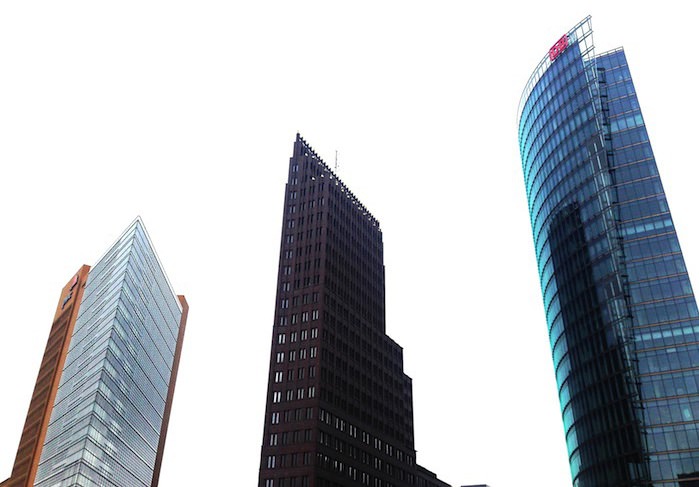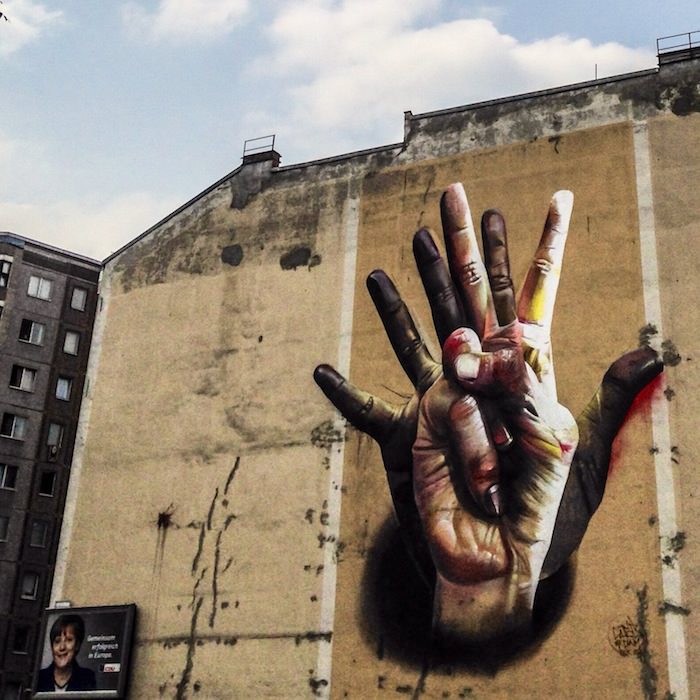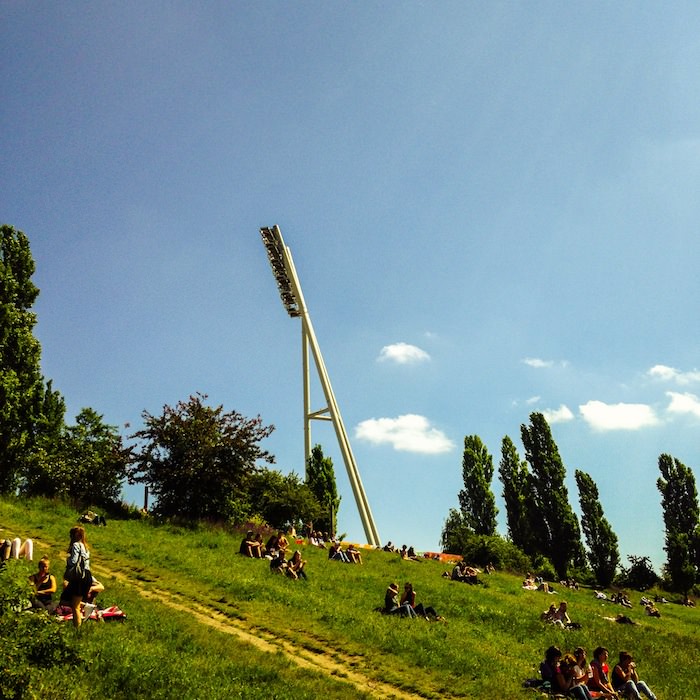Of all Europe’s capitals, Berlin is one of the most geographically unique in that it doesn’t have much of a city ‘centre’. In its day, cutting the city down the line, the Berlin Wall created two separate hubs, depriving the reunified modern capital of an organic ‘downtown’. While a ‘centre’ has developed since the reunification years (in the form of the ‘Mitte’ district) it is arguably within the city’s diverse circle of eclectic neighbourhoods that its true character is to be found. Under the throes of gentrification, Berlin as a whole is transforming, and fast. But then, it always has—the Deutsch capital today, unlikely to be the same one tomorrow.
Here’s a quick rundown on the current state of the restless city’s central districts:
Mitte
The most central of all Berlin’s boroughs (and the most touristy), Mitte comprises parts of both the old East and West Berlin. Heavily gentrified, Mitte’s bar and nightlife scene has not been terribly vibrant since the post-reunification years. You’ll run into most of Berlin’s historical landmarks and museums here, including the Reichstag, Brandenburg Gate, the western side of Checkpoint Charlie and the central square, Alexanderplatz with its lofty, iconic Fernsehturm tower. The River Spree snakes its’ way through the heart of Mitte, home to museum island, HQ to internationally renowned Pergamon museum and the iconic Berliner Dom.
Prenzlauer Berg
To the north of Mitte sits Prenzlauer Berg, once a gritty working class neighbourhood, now a leafy, affluent district known for gorgeous architecture, trendy organic stores, yoga schools and a thriving bar and café scene. Relatively untouched in the war years (compared to other parts of the ravaged city), Prenzlauer Berg’s cobblestone streets, leafy oaks and pretty tenements make it one of the more aesthetically attractive parts of Berlin. Post-reunification, artists and students flocked here for the cheap living. Much has changed in two decades; yesterday’s artists gravitated to cheaper rents, and the hipster scene that moved in following now comprise most of P-Berg’s stroller-pushing family units. Cosy and easy on the eye, Prenzlauer Berg’s appeal continues to rise with its prices and rents.
Shoeneberg
Shoeneberg is perhaps most well known in popular culture as the home of David Bowie and Iggy Pop back in the early 80s—their neighbourhood around Hauptstrasse 155 has changed relatively little compared to the rest of Berlin in the past 20 years. Situated slightly south west of Mitte, just away enough from Kreuzberg’s limelight to remain slightly more incognito, Shoeneberg is a leafy, pleasant spot, home to a diverse, multicultural population, well connected by U-Bahn—a confident charmer that doesn’t need to be at the centre of the action.
Friedrichshain
Wedged in between Mitte, Kreuzberg and Prenzlauer Berg, the once industrial turf of Friedrichshain has transformed over the past decades into a thriving neighbourhood with an abundance of bars, clubs and cafes. Littered with graffiti and still hard on the eye, this old East district continues to attract a solid influx of young families and arty types, as well as design and media businesses. Straddling the north and south banks of the River Spree, its iconic bridge, the Oberbaumbrucke was sealed as an East-West border point during the Cold War; post-reunification, it became a doorway to Friedrichshain’s vast, empty tenement blocks, attracting many a squatter and the organic rise of a strong, alternative subculture finally free of the repressive GDP.
Neukolln
Not too long ago, Neukolln was considered an outer reach district, a working class neighbourhood full of Turkish families. These days it is a hotbed of hipster activity, home to a sea of expats and young international creatives (‘yukis’). A sprawling, diverse district southeast from Mitte, directly beneath the eastern side of Kreuzberg, Neukolln’s bar, cafe and nightlife scene continues to grow in leaps and is amongst the best in the city. While its rents have risen with the interest, it’s one of Berlin’s most sought after spots to call home for locals and internationals alike.
Kreuzberg
One of the most well known and sought after of Berlin’s districts, this multicultural hotspot might be better thought of as two separate boroughs—the eastern side, known as Ostliches Kreuzberg (Berlin SO 36), and the western half, Westliches Kreuzberg (Kreuzberg 61). Cordoned off by three sides of the Berlin Wall, Kreuzberg attracted creatives, artists and musicians well before the reunification years—like Friedrichshain afterwards, it developed a strong punk subculture and a thriving art and clubbing scene. It retains much of its original grit, particularly in the eastern side surrounding Gorlitzer Park, the western nooks have become heavily gentrified.
Moabit
On the northern border of Mitte and Tiergarten, a former border district to West Berlin, Moabit, the once virile 19th Century industrial neighbourhood is fast transforming into one of Berlin’s prime spots for ‘new’ residents. Cheaper rents and cost of living, as well as proximity, have attracted a fair share of expats and immigrants during the past decade; while its transport linkage is not the best, its bar and café scene is steadily on the rise. Like Wedding, this is a neighbourhood in a steady process of transformation.
Wedding
Culturally diverse, aesthetically harsh, Wedding might still be one of Berlin’s poorest neighbourhoods, but it’s for all these reasons that continues to attract a surge of fresh, younger residents. Rents remain relatively low here, with an emerging bar, nightlife and art scene slowly popping up. As Kreuzberg, Neukolln and other surrounding districts continue to endure heavy gentrification, Wedding is widely predicted to be next in line, if not immediately.
Charlottenburg
Neatly residential, affluent and comfortable, Charlottenburg is a bourgeois haven from Berlin’s concrete grit and 24 hour nightlife. Home to a mostly older population, with a trickle of younger residents moving across in the past few years, Charlottenburg’s Western European charm, proximity to fine restaurants and vast recreational areas make it the ideal place for Berliner families.
Written by and Photos by Cam Hassard for EuropeUpClose.com





